When I think of powerboats I don’t usually equate them with a relaxing ride and quiet conversation, yet the Starry Nights design (20′ LOA, 57″ beam), a new torpedo-sterned electric launch from designer and builder Ken Bassett, handily fulfills those purposes. Her six 12-volt AGM batteries power her 3-hp electric motor, enabling her to cruise at 5 mph for up to six hours.
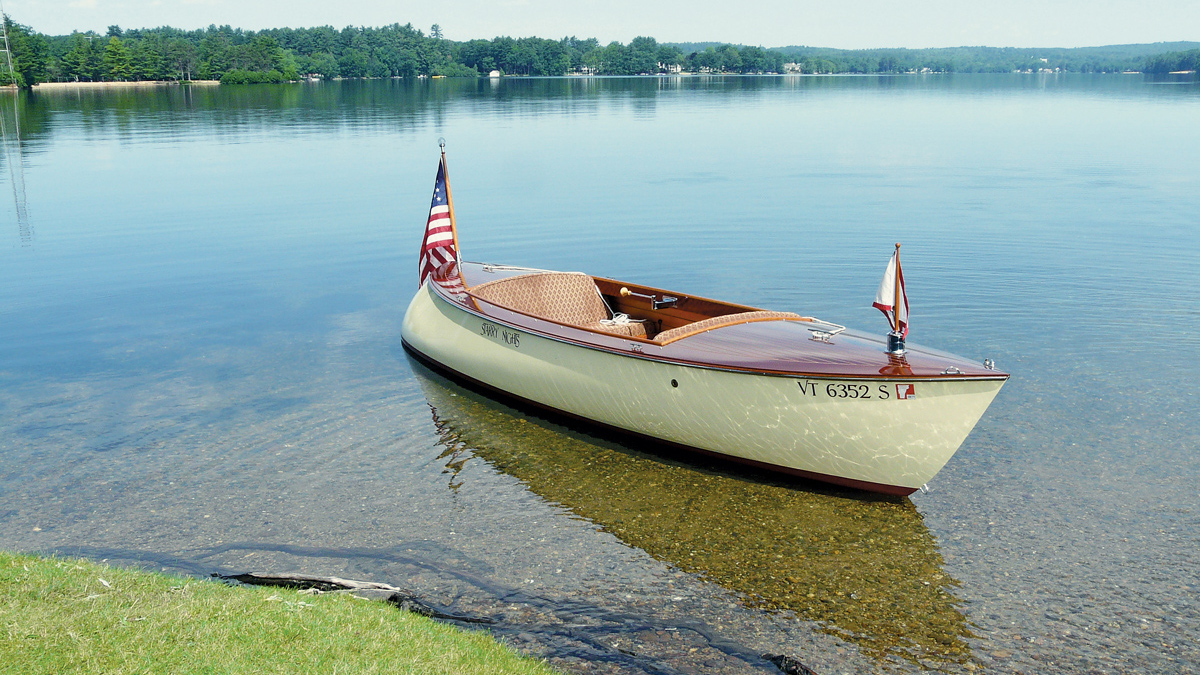 Karen Wales
Karen WalesThe 20′ Starry Nights launch from Onion River Boatworks is a picnic launch in the finest tradition. Powered by a 3-hp electric motor, she is a gentle, quiet presence on the water.
Ken Bassett works out of his own shop, known as Onion River Boatworks, in North Hero, Vermont. He has been designing and building boats for decades. I have long admired his work, such as the lapstrake Whitehall-like pulling boat Liz and the jovial little batten-seam-constructed runabout he calls Rascal. His plans are remarkably detailed and easy to follow, making them accessible to a wide array of builders. Even some first-time builders have had success building Rascal—a tribute to Ken’s abilities as a designer and a communicator. A great plan maker is a great teacher, and Ken’s plans put him among the very best.
Embarking on this article, I found it difficult to understand how a lone designer could be successful with such seemingly disparate areas of boat design— and this new design, as complete as it is, couldn’t have simply appeared out of thin air. I knew that the Starry Nights launch must be rooted in a vast knowledge of boats. But I had no idea just how vast, until meeting Ken one bright morning last July.
We met in New Hampshire, at a lake that runs along the old New England mill town of Laconia. Heads turned as Ken backed the launch down the town’s boat landing. Seeing her on the trailer gave me a good look at her underbelly. Starry Nights is a displacement boat with a round bottom that is nearly flat for much of her length; forward sections are gentle curves that become increasingly tighter at the turn of the bilge and flatter underneath, the farther aft you go. Her keel, which deepens as her hull flattens out aft, accounts for her superb tracking ability.
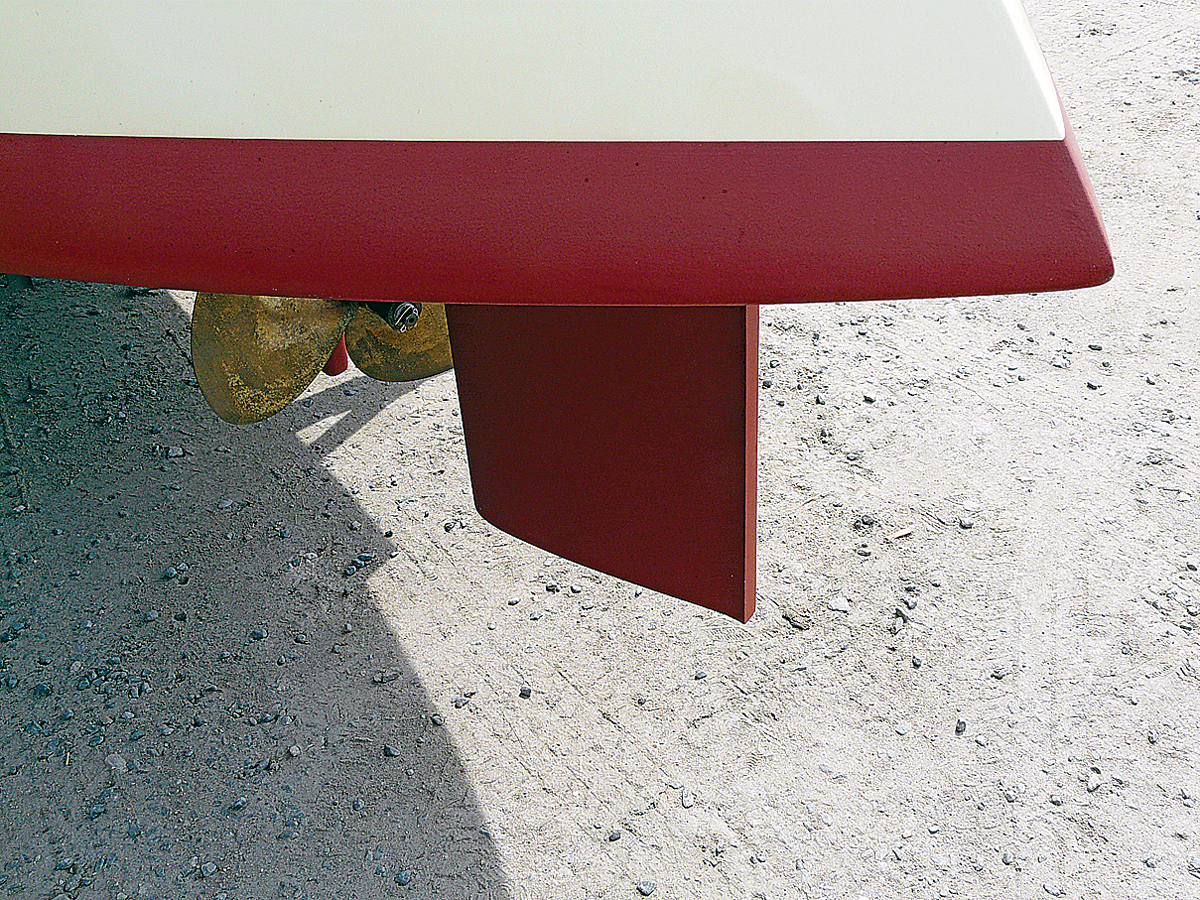
Starry Nights is steered by a MacLear Thistle Rudder (see text at left for description), which allows for surprisingly good maneuverability at low speeds and in tight quarters.
She has a fishtail rudder—a MacLear Thistle Rudder, invented by the late Frank MacLear, a naval architect. Ken learned of this breakthrough rudder design from an article by Dave Gerr that appeared in Professional BoatBuilder magazine, a sister publication to Wooden- Boat (see PBB No. 102). In his article, Gerr said, “… MacLear had set out to improve low-speed maneuvering in close-quarter conditions, as well as to enhance steering response at speed. As stated, almost all ordinary rudders are ineffective when the helm is put over more than 35° port or starboard. Turn a normal rudder farther than that and it just acts like an unpredictable brake. It can even create eddies that throw the stern about randomly…. The [rudder] shape is essentially a standard airfoil rudder section flared out in a fishtail at the trailing edge. What does all this shaping accomplish? At normal cruising speed the rudder doesn’t change vessel performance much, though it does increase steering response slightly at small course-keeping helm changes. But, during low-speed maneuvers, you can turn the MacLear Thistle rudder over as much as 40°. Water flow is guided around the leading edge and midsection by the rudder’s section shape; then, the flared-out end makes water flow continue to do useful work at the higher angle. The result is a rudder that acts like a stern thruster, allowing very tight turns at low speed.”
I tried it—it’s awesome. Combined with the buttery smoothness of the electric motor and the seakindliness of the hull’s underbody, the MacLear rudder is the icing on the cake, making Starry Nights one of the easiest boats I have ever piloted. She rides like a magic carpet on the water.
Unlike most gas-powered boats, where slow maneuvering is a dance between often-abrupt thrusts and calculated drifting, this intuitive boat is super-responsive with an almost road-traction feel. Even a complete neophyte could land her dockside with confidence.
While she is nearly silent like an electric launch and glides along like an electric launch, I couldn’t get away from how much she reminds me of the torpedo-sterned runabouts of bygone days. Her sheerline and deck treatment in particular show a strong relation to the runabout family. I was about to learn why.
After a relaxing morning boat ride we grabbed a bite at a local diner. There we happened to meet Mark Mason, a heavy-hitter in the runabout world whose accomplishments include the restoration of BABY BOOTLEGGER (see WB No. 150). Previously unbeknownst to me, Ken and Mark had worked together for several years. Mark attributes part of the success of some of his best work to critical participation from Ken. Then it all became clear to me; that long experience with runabouts is what gives this boat its panache.
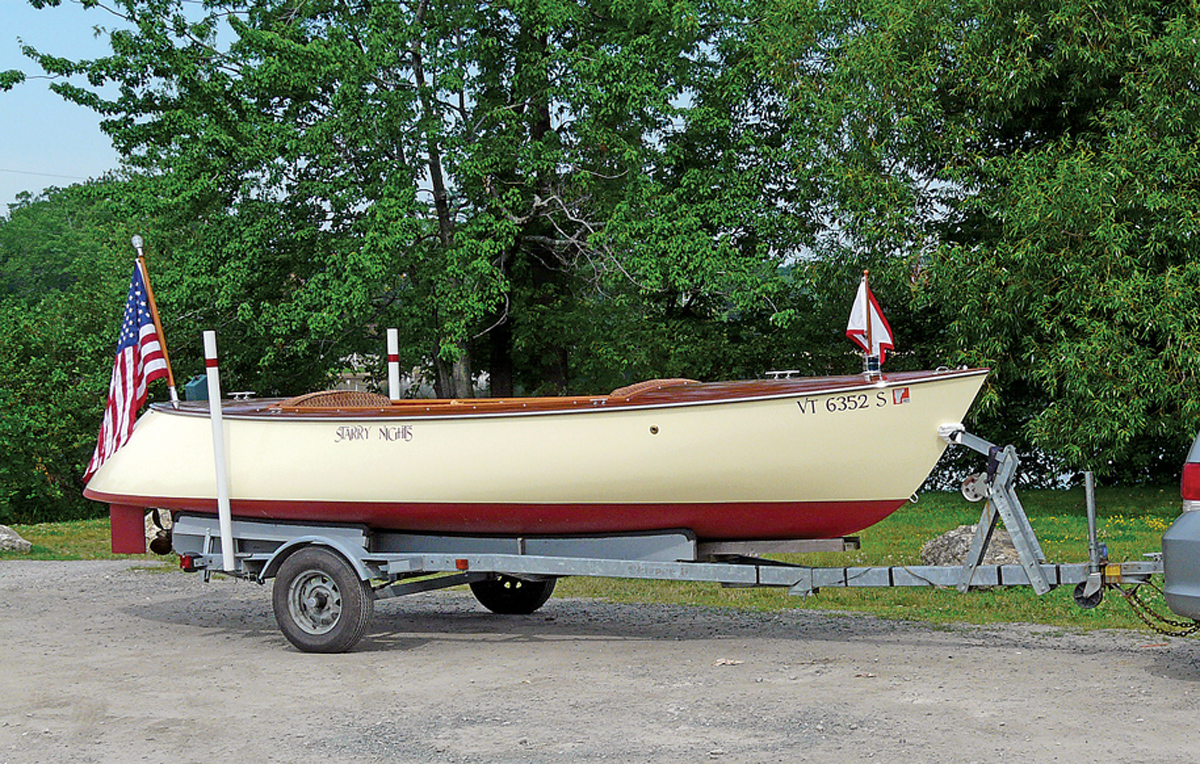 Karen Wales
Karen WalesDurable strip-planked construction, sheathed in fiberglass, allows Starry Nights to be hauled out when not in use, with no fear of drying out.
The Starry Nights design is a complex-looking boat to build, but the hull actually isn’t overly complex. Strip construction makes it a doable project for even a less experienced builder. Ken used 3⁄8″ cedar strips to create the hull, and then sheathed it inside and out in 20-oz fiberglass and epoxy. While a builder will have an easier time if he comes to this project with an experienced eye, some hand skills, and a familiarity with systems, a dedicated amateur can simplify this enough to have a nice boat, while keeping it honest to the designer’s intentions. I know that amateur builders have been successful with far more “advanced” boat types from this designer—the batten-seam-constructed Rascal runabout being one good example. The clarity and exceptional detail of Ken’s plans greatly reduce the intimidation factor. At the same time, built as shown, his attention to detail can provide enough of a challenge to satisfy the more seasoned builder as well.
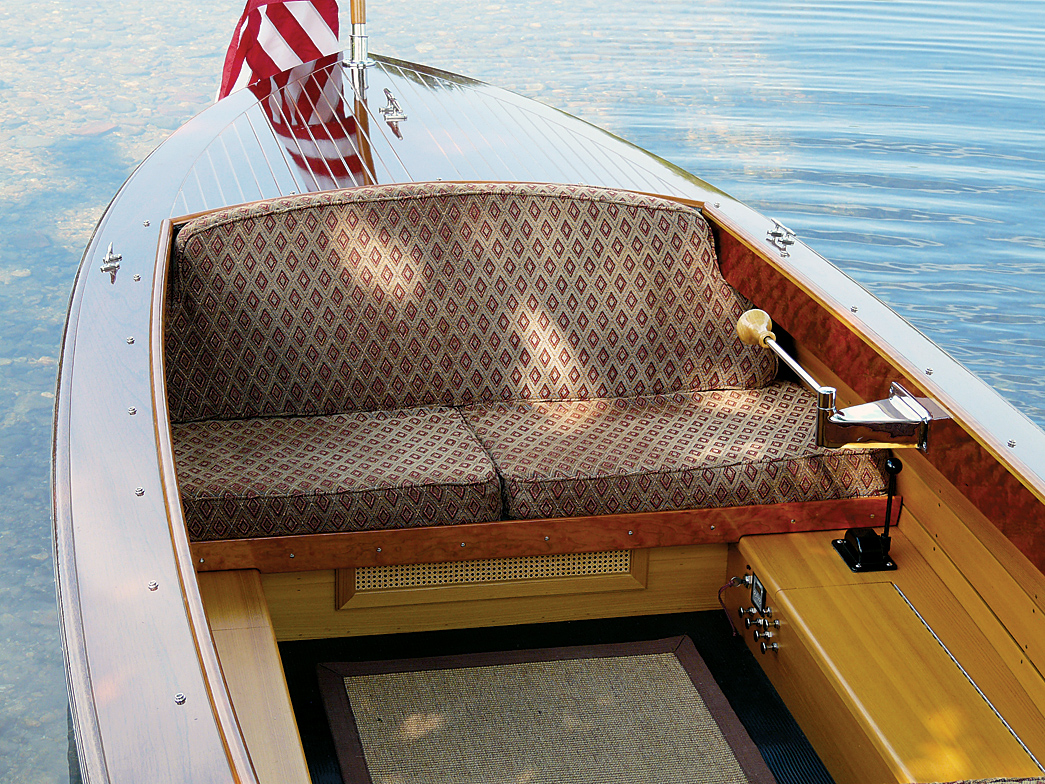 Karen Wales
Karen WalesStarry Nights is steered by the simple side-mounted tiller seen here; another lever controls the motor’s RPMs. She’ll cruise for six hours at five mph.
Look closely at the details. Coaming pieces are bookmatched cherry with quilted figure. The turned tiger-maple tiller handle is the result of long experimentation with a variety of materials in order to get the best-looking—and feeling—result. The ventilation register is caned. Each component represents careful study and carries the mark of experience.
When we learn to fish, we often want to snag the largest, then the most, then the best, whatever our tastes deem that to be. Our boat-owning desires are not entirely different; at the onset we may be drawn to size, speed or flash, but when we know more and understand our true desires in a boat, then we are drawn to a specific type. The Starry Nights design is not for everyone, to be sure, but for those who would like a comfortable boat for quiet exploration and pleasant gatherings, this boat has a lot to offer. Sexy enough for the runabout crowd yet with the serenity that could satisfy book club types, she’s a true original—my kind of girl. ![]()
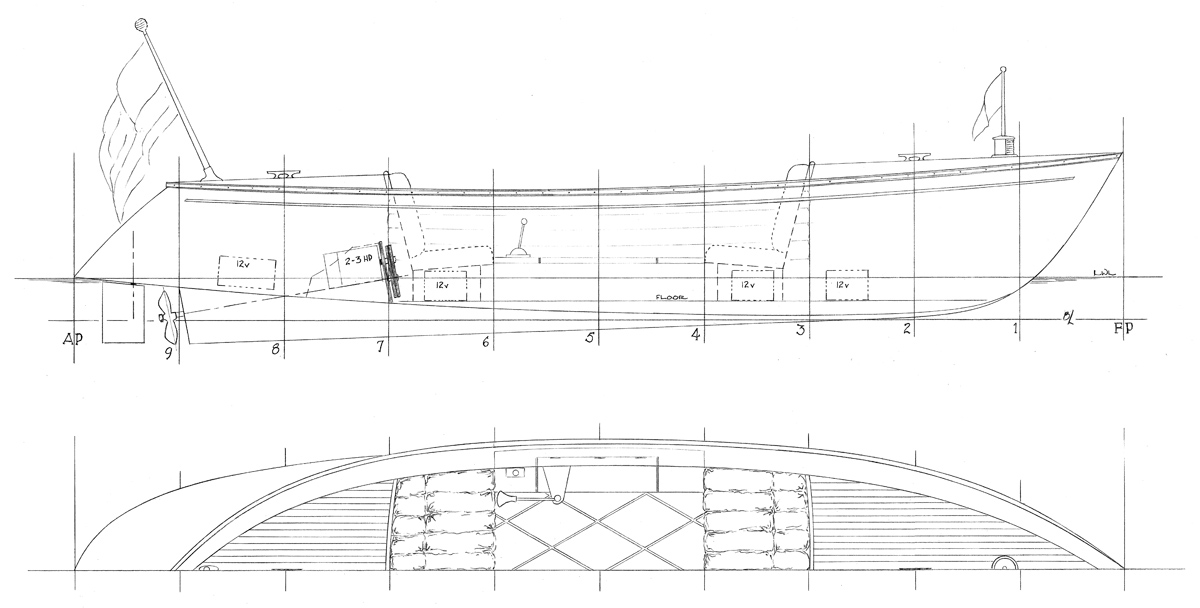
The lines plans shows an easily driven hull, with topsides that spiral aft into tumblehome sections, and terminate in a torpedo stern. Starry Night Particulars LOA Beam 4′9″ Draft 15″ Weight 1,100 lbs
Ken Bassett retired and closed Onion River Boatworks in 2017; there are no plans available for STARRY NIGHT. The review is presented here as archival material.


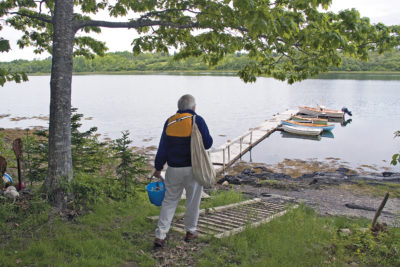
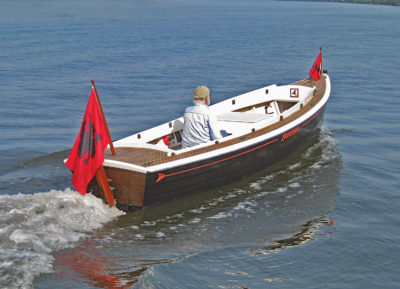
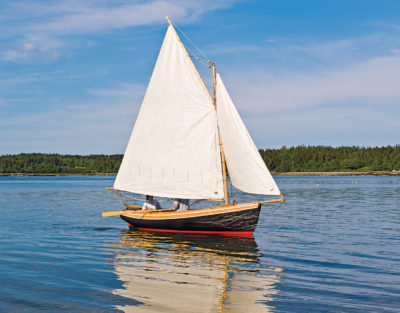
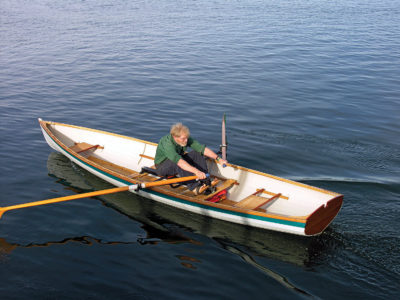
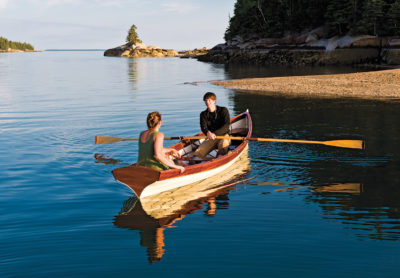

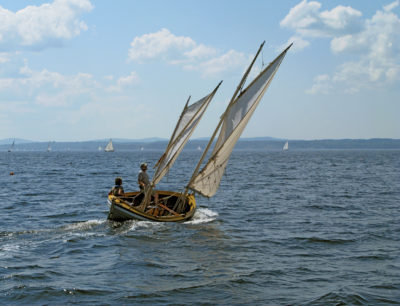
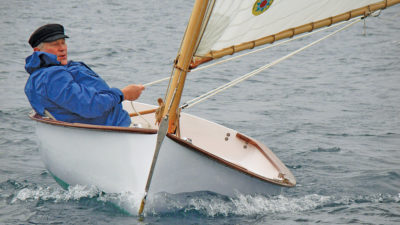
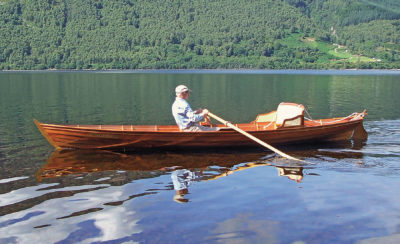
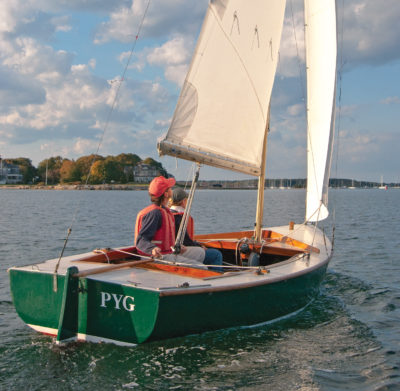
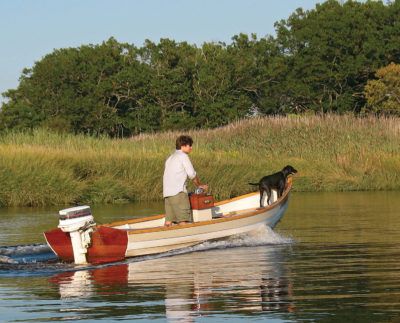
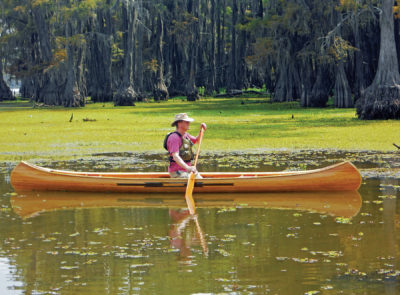
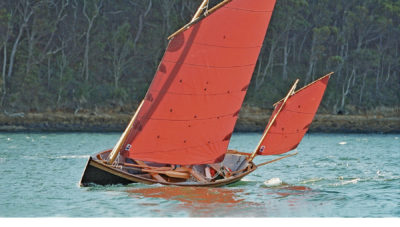
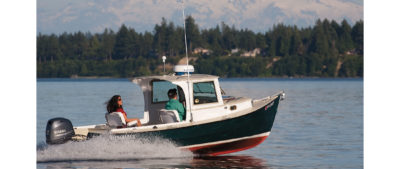
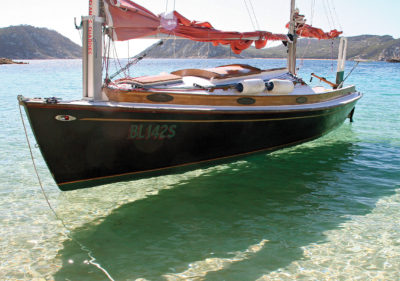

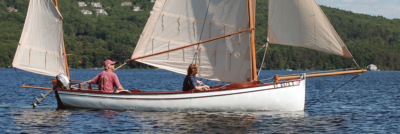
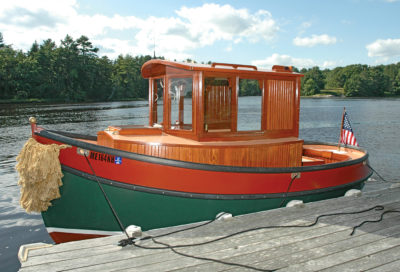
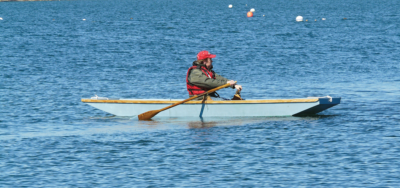
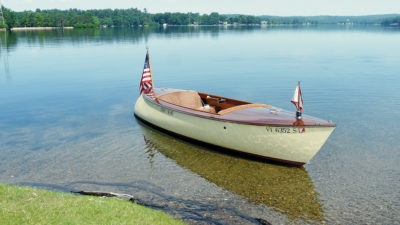
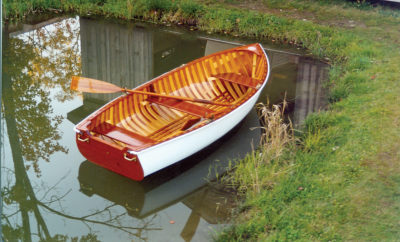
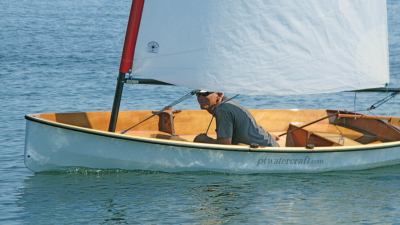
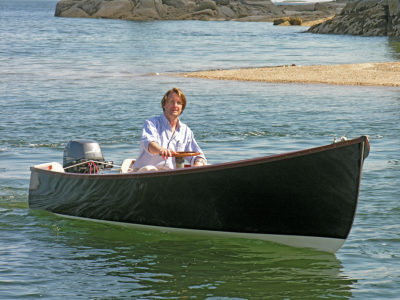
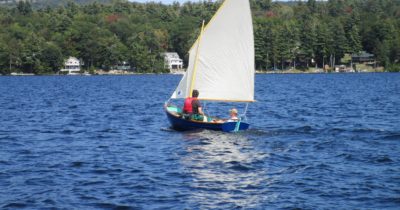
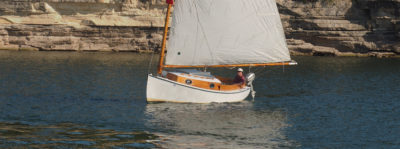
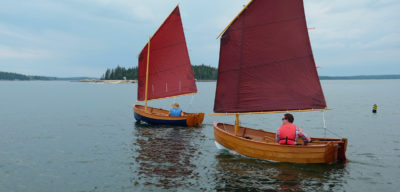
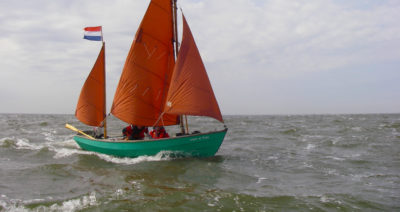
Walesy! Where have you been?
Great to be reading your stuff again.
I would have loved a clear photo of that interesting stern. The rudder shot was the only view from the rear!
Shame that plans are no longer available – VERY interested in this design, would be a great boat to build. So sad!
Beautiful boat, I’d like to build one!